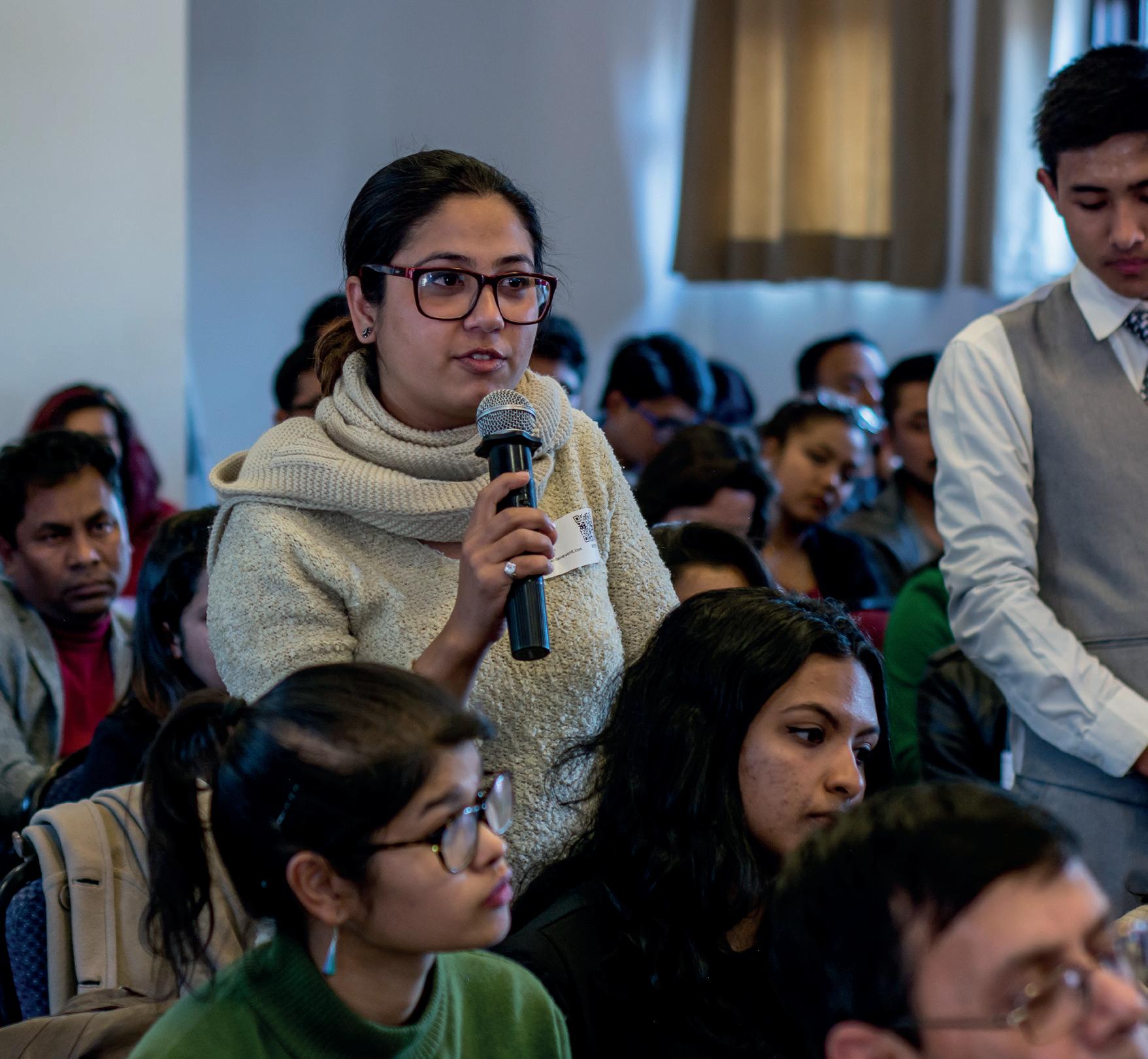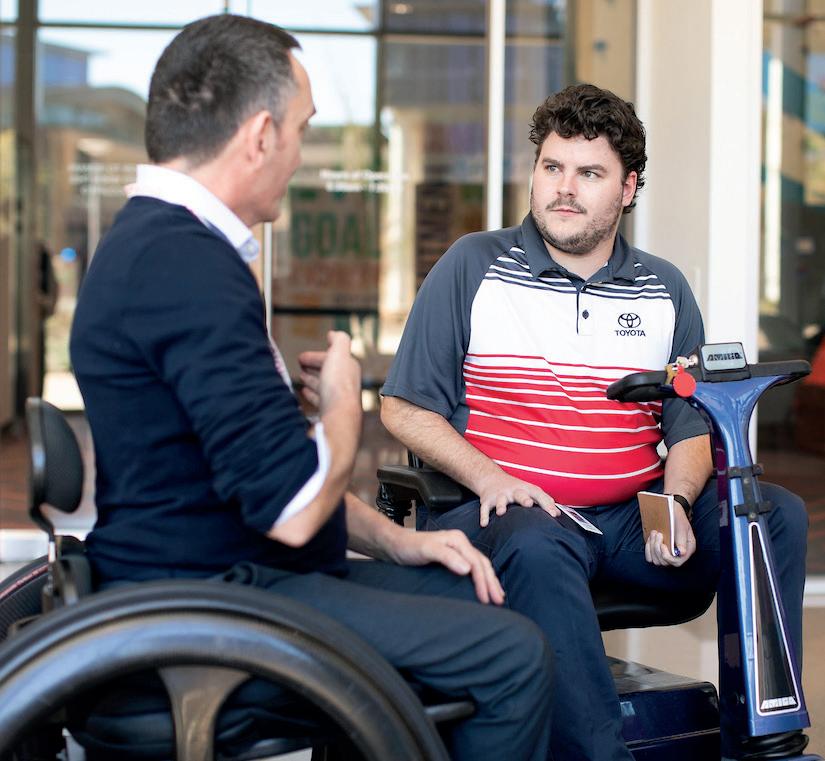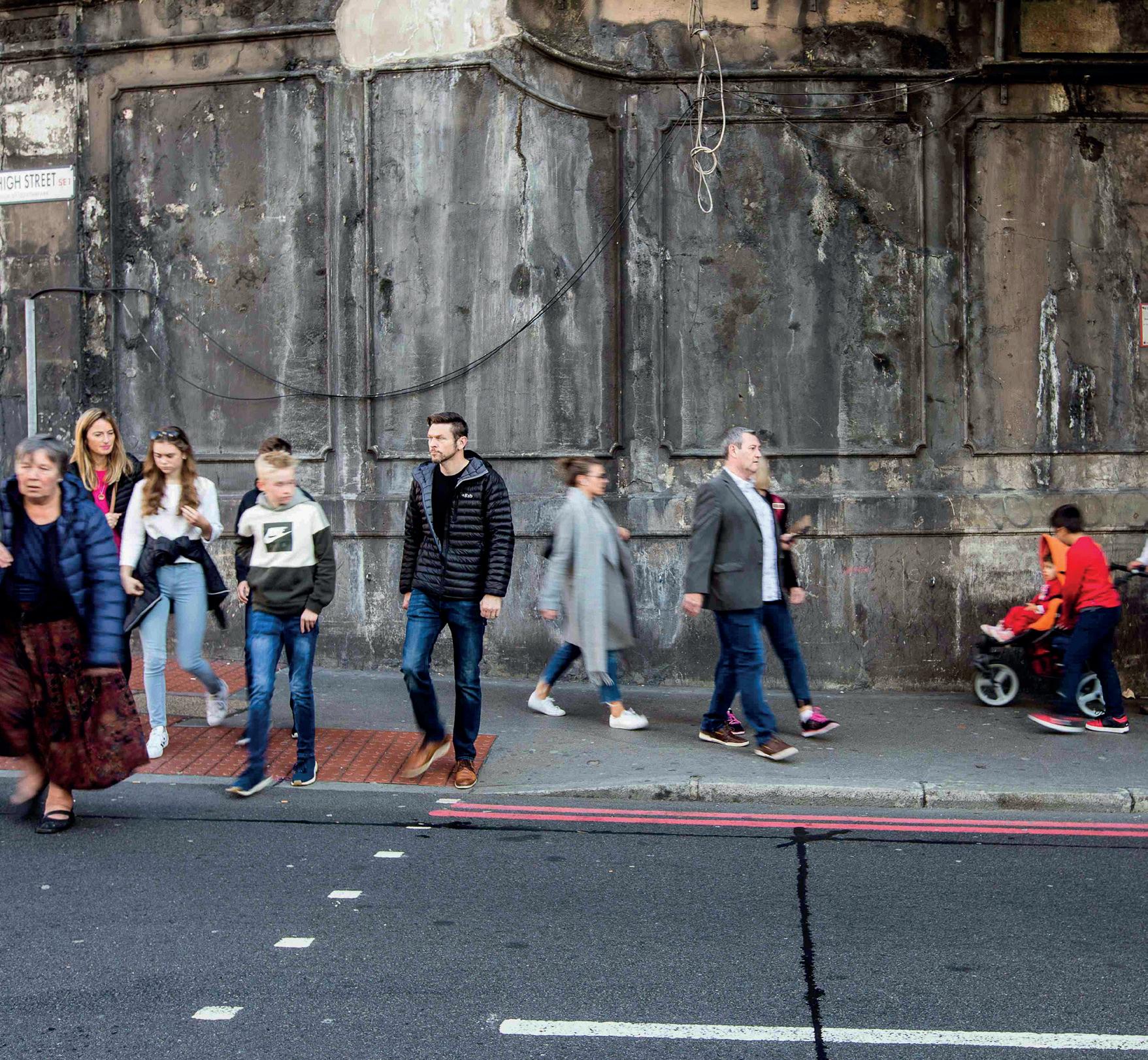
10 minute read
How to run a challenge prize
Breakthrough prize
Prize objective To create transformative solutions to a difficult problem
Defining characteristics • Ambitious and tightly-defined goal • Technological solution • Large prize pots, longer timeframe often required
Design guidance • Focus on developing a technological fix to a known barrier • Focus on developing innovations that don’t yet exist, or are in relatively early stages but facing a barrier to their further development • Structure criteria around the key attributes the solution must have in order to solve the problem you have set
Participant in the Longitude Prize
Longitude Prize Nesta Challenges’ Longitude Prize aims to stem the tidal wave of antibiotic resistance – one of the greatest challenges of the 21st century. The £8m prize incentivises the creation of a novel, rapid, point-of-care diagnostic test to reduce and/or better steer the use of antibiotics. The winning test will ensure that people get the right treatment at the right time, potentially saving millions of lives and preserving antibiotics for future generations.

Mobile-based innovation
Haiti Mobile Money Initiative Launched by the Bill & Melinda Gates Foundation and USAID, with endorsement from the Central Bank of Haiti, the challenge was to create a well-designed and well-supported delivery model that would enable people to use their mobile phones for banking. The prize was awarded in two stages: a First to Market award of $4m and a Scaling award of $6m. This incentive for providers to scale quickly led to the rapid design and launch of two mobile money services within seven months. In the first two years, over 800,000 users had signed up to the services.
Scaling prize
Prize objective To scale transformative innovations so that solutions achieve wider impact
Defining characteristics • Rewarding impact at scale, aiming to kickstart a clear potential market • Creating scaling incentives where the market has failed to do so • Quantifiable targets that reward innovators who reach scale • Typically targeting a small pool of innovators with relevant skills and expertise
Design guidance • Focus on innovations that have been proven at a small scale and are known to have potential impact at scale • Your structure and incentives must take into account barriers to scaling • Structure your criteria around market uptake and the impact the innovation is to have • Beware perverse incentives, ensure you are promoting scaling that is sustainable and impactful
Startup challenge
Prize objective To build capacity of early stage innovators, supporting their entry into the market
Defining characteristics • Broad goal with a focus on bringing new innovators and new ideas into the field • Emphasis on building innovator capacity, in response to the lack of innovators being identified as a key barrier to the development of new solutions • Larger numbers of entrants and prize participants funnelled through multiple stages with increasing levels of support
Design guidance • Set challenge goal to be broad so a wide pool of innovators and innovations are eligible • Establish a low bar to entry by accepting early stage ideas and simplifying the entry process • Seed grants and other support are particularly important, so criteria should be broadly defined to allow fair scoring of disparate ideas • Multiple stages allow for a wide range of innovators to be funnelled through the prize process. Efficient use of resources is supported by weighting support to the later stages • Balance smaller prize amounts against significant investment in capacity development support and grant funding during the prize

Finalists in the Inventor Prize
Inventor Prize
This prize was delivered by Nesta Challenges and funded by the UK Government Department for Business, Energy and Industrial Strategy to discover the UK’s best ‘hidden inventors’ and support them to develop innovative products that would make people’s lives better. Prior to entering the prize, seven of the ten finalists had not brought a product to market before. Through their participation in the prize, eight of the finalists were able to secure additional funding, partnerships, clients and/or attract new investments for their solutions. All finalists reported that the prize offered them credibility as an individual or team, and validation of their product.

Data Driven Farming Prize participants
Data Driven Farming Prize
Technology has enormous potential to transform agriculture, but too often the data is locked away in government and research institutions, out of farmers’ reach. Nesta Challenges’ Data Driven Farming Prize, sponsored by USAID and Feed the Future, challenged innovators to use technology to improve agricultural productivity and the livelihoods of smallholders in Nepal. 13 finalists received seed funding, as well as workshops on business development, mentoring from a field partner and help developing a business plan. Four winners, two from Nepal and two who hadn’t worked in Nepal before, shared $300,000 in prize money. 50
Community-centred challenge
Prize objective To develop better solutions by bringing innovators and communities together
Defining characteristics • Response to communities being neglected or underserved by existing solutions • Typically features multiple stages with emphasis placed on facilitating meaningful interactions and collaboration between innovators and the communities affected by the issue • Innovations could be technology, product or service based
Design guidance • Criteria should ensure that the innovations are well suited to the community they are designed for • Build in extensive interactions between innovators and end users • The focus of the prize should be on relatively early-stage innovations that need to be tested and developed • Invest considerably in co-creation, mentoring and events – these may be as valuable as the final prize. Innovators and community members aren’t necessarily separate groups of people
Spotlight prize
Prize objective To shine a light on a neglected issue or problem
Defining characteristics • Similar to the breakthrough prize, but highlights a broader problem to attract a wider range of innovators • Problems that these prizes focus on suffer from a lack of awareness that constitutes a key barrier to innovation – existing solutions lack nuanced understanding of end users’ needs • Typically features significant investment in
PR and communications
Design guidance • Define an ambitious goal with the aim of developing a broad range of innovations focused on end users’ needs • Consider how best to ensure that innovators build a clear understanding of their end users and meaningfully involve them (e.g. through eligibility criteria or judging criteria requirements during stages) • As part of communications and PR activities, look at how to use the excitement of the prize to build greater awareness of the issue • The prize should ideally be part of a broader programme or strategic priority

Photo from the induction event for the Mobility Unlimited Challenge
Mobility Unlimited Challenge
Mobility devices can be life changing, but the pace of innovation is frustratingly slow. The Toyota Mobility Foundation partnered with Nesta Challenges to launch the $4 million Mobility Unlimited Challenge. It aims to support radical improvements in the mobility and independence of people with lower-limb paralysis through smarter assistive technology as well as raise awareness of the mobility barriers they face. Finalists range from an exoskeleton on wheels to a self-balancing wheelchair. Outreach activities have included ‘My Mobility Unlimited’, an online campaign that invited people with lower-limb paralysis to share their life experiences and highlight what they want from their mobility devices. 53

Courtesy of SRA
Legal Access Challenge
Only one in three people in the UK with a legal problem get expert advice when they need it. To improve access to legal services, Nesta Challenges has delivered the £500,000 Legal Access Challenge in partnership with the Solicitors Regulation Authority. The challenge’s goal was to support solutions that help people better understand and resolve their legal problems. Solutions that came through include converting complex forms written in legalese to plain English, helping people to combine forces to seek legal redress, and online tools that provide speedy redress to busy small businesses. It’s helping to overcome the challenges faced by innovators seeking to stimulate interest in the growing lawtech sector. 54
Testbed challenge
Prize objective To stimulate innovation in support of policy or regulatory objectives and inform future policy
Defining characteristics • Aim to inform policy and regulation, for example to identify barriers to innovation or the need for new rules • Used by governments and regulators with an interest in safely bringing new innovations and technologies to the market • May include providing safe testing environments – physical or virtual – in which innovators can experiment in a controlled fashion • Open to a range of innovators, often with a focus on new entrants and disruptors Design guidance • Define clearly what can be learnt from the challenge that could inform policy, and build this into the challenge process • Consider how best to structure the challenge to make it attractive to a wide range of high quality innovators, not just market incumbents. Financial prizes may be less important than other incentives the policy maker can offer – for example, data or regulatory support • Investment may be required to provide a physical or virtual environment that gives innovators and policymakers the freedom to experiment, iterate and learn (e.g. a test facility, access to data)
Closing thoughts
Funding is increasingly mission-oriented in order to better focus minds and resources on delivering impact and achieving measurable change. This works because innovation thrives on clear goals that, for example, extend our healthy lives or return people to the moon and beyond.
Our most pressing challenges need to be exposed to disruptive innovators who thrust us forward, rather than incumbents who inch us towards progress.
In this landscape, the role of challenge prizes as an agent for transformation is becoming increasingly relevant. They open up the field, tapping into ingenuity and bringing new ideas to the fore. It was this approach that historically helped us to navigate effectively at sea, preserve food and fly across the Atlantic. The new wave of challenge prizes is helping us to clean up ocean oil spills, tackle drugresistant infection, and open up entire new sectors like driverless cars and open banking. At Nesta Challenges, we are independent supporters of change to help communities thrive and inspire the best-placed, most diverse groups of people around the world to take action. We support the boldest and bravest ideas to become real, and seed long-term change to advance society and build a better future for everyone.
It’s up to you what innovation the next challenge will bring. Visit our website for more resources, or get in touch with us through the contact details below.
challenges.org challenges@nesta.org.uk facebook.com/NestaChallenges twitter.com/NestaChallenges linkedin.com/company/nesta-challenges
We are Nesta Challenges
We are challengers. We are innovators. We are game changers.
Nesta is an innovation foundation. For us, innovation means turning bold ideas into reality and changing lives for the better. We use our expertise, skills and funding in areas where there are big challenges facing society.
We work with partners around the globe that bring bold ideas to life to change the world for good.
Nesta Challenges exists to design and run challenge prizes that help solve pressing problems that lack solutions. We shine a spotlight where it matters and incentivise people to solve these issues. We are independent supporters of change to help communities thrive and inspire the best-placed, most diverse groups of people around the world to take action. We support the boldest and bravest ideas to become real, and seed long-term change to advance society and build a better future for everyone. We are part of the innovation foundation, Nesta.
Photo credit: cover by Daniel Klein on Unsplash page 6 by SpaceX on Unsplash page 12 by Jason Andrews of the Flying High Challenge page 18 by Christopher Burns on Unsplash page 22 Inventor Prize participants page 54 courtesy of the Solicitors Regulation Authority



